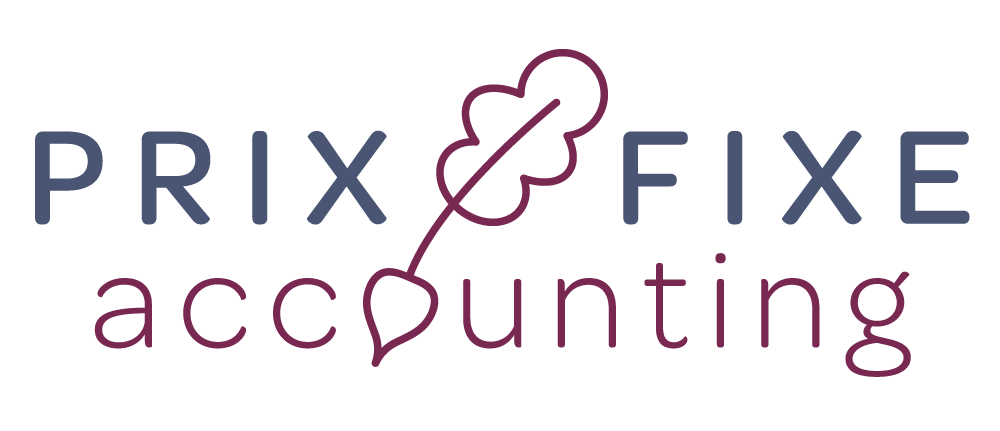We get it, you’re probably thinking the thought of bookkeeping sounds boring but honestly, understanding what it is and, more importantly, appreciating its value can have a huge role in the success of your restaurant. Put simply, however big or small your restaurant is, bookkeeping is essential, not just for now but to help you prepare for the future too. And remember, if you start to neglect bookkeeping, then it’s difficult to catch up.
Options for Restaurant Pandemic Assistance
A lot of businesses got stiffed on the Restaurant Revitalization Fund (RRF) Grants. After the program closed on May 3rd, less than 10 days after the launch of the program, the Small Business Administration ended the program on Jul 3, 2021, claiming they had released the full $27.6B the organization was allocated. More recently, the list of recipients was released, sending many independent restaurant owners into a fury, as the receipts on the top of the list were large franchises of Dunkin Donuts, Denny’s and Panera, rather than actual independent restaurants. In the end, 5% of the RRF receipts, ended up with 40% of the money.
That leaves many small business owners out of the pool. A staggering $60B in applications is left unfunded. That begs the question, what options are left for those that weren’t lucky enough to receive RRF money?
EMPLOYER RETENTION TAX CREDITS (ERTC)
The ERTC is the red-headed stepchild of pandemic relief. The program was quickly shoved in the corner in favor of the Paycheck Protection Program. However, now that time has passed and the PPP has been fully utilized, business owners and accountants are turning their attention to this program. It works in tandem with the PPP (but you can’t use the same money on both programs, effectively double-dipping), but you can earn a credit of up to 70% of wages per quarter, with a limit of $10k per employee per quarter for 2021.
Do I qualify for ERTC?
This setup is similar to the PPP programs.
If you have less than 500 full-time employees
And:
Operations either fully or partially suspended due to orders from a governmental authority due to COVID-19, OR;
The business experienced a significant decline (50%) in gross receipts when comparing either the calendar quarter or the prior quarter to the corresponding quarter in 2019.
Well, then you’re in luck, you’re eligible for the ERTC.
How do I apply?
Reach out to your accountant. This is an absolutely BRUTAL process to calculate these numbers, and it's absolutely not something you should do only on your own. Your accountant should be able to help with this, but be patient, as they have a lot of work on their plate already. Ask them honestly if they are going to be able to handle it, and if not, reach out to other accountants to get it done.
The Economic Impact Disaster Loan (EIDL)
There is a staggering $30B remaining in the Economic Impact Disaster Loan. Qualified businesses (which is basically anyone who was open prior to 2020) can take advantage of this program. While the other options have been either grants or tax credits, this program comes in the form of a loan through the Small Business Administration. Applicants can qualify for up to a $500k loan at 3.75% for 30 years. In the world of commercial loans, this is a rock bottom rate and a great term. There are some strings attached to this loan (can’t be used for new equipment or expansion of the business), but, if you’re willing to take on some debt, you might as well take advantage of this cheap money.
The calculation for the loan amount is your 2019 Gross Profit (Revenue - Cost of Goods Sold).
You can apply for this loan here, and if you have all the information, it takes about 20 minutes.
But what about the Restaurant Revitalization Fund?
If you’re still holding out for the RRF, don’t. Simply put, the political capital behind replenishing the fund is few and far between. The Independent Restaurant Coalition is putting pressure on Capitol Hill, but it doesn’t seem like politicians are interested in replenishing the fund now that businesses are opening back up. There are some clever bills out there, looking to reallocate unused aid, such as the ENTRÉE Act, but there isn’t much news on the progress of the bill. In short, plan for the worst, and hope for the best.
Also, call your state representative and demand support.
Common Expenses Every Restaurant Owner Should Know
What exactly does a restaurant accountant do?
Am I eligible for the restaurant revitalization grant?
Guidance on the Restaurant Revitalization Fund Applications Revealed!
UPDATED INFORMATION ABOUT THE RESTAURANT REVITALIZATION FUND
Changes to the Restaurant Revitalization Fund Application Process
APPLYING FOR A RESTAURANT REVITALIZATION FUND GRANT
How to do bookkeeping for a restaurant?
Bookkeeping isn’t, of course, a challenge solely for restaurants. However, it’s fair to say that restaurants’ often notoriously thin profit margins don’t make this staple task easy. And that’s also why it’s so important to keep an extremely close eye on your financial data as a restaurant owner, given that failing to notice just one thing could imperil your entire business.
With the hospitality sector being what it is, effective restaurant bookkeeping can be a bit… complex. So, let’s summarize the basics of what you need to get right to balance the books.
Recording sales each day
Having some way of reliably keeping track of your daily revenue is one of the most fundamental components of restaurant bookkeeping. And when we say daily, we do mean you should be recording a separate sales entry for each day, rather than monthly or weekly. This approach allows you to mirror how cash and credit card deposits hit your restaurant business’s bank.
Thankfully, restaurant POS systems do tend to incorporate a daily sales summary anyway. Regardless, the key thing is to know precisely how your restaurant’s funds are hitting your bank so that you can set up a restaurant bookkeeping system that mimics this activity.
Handling accounts payable
There aren’t many things more important for a restaurant business than paying its bills in a timely manner; after all, without all those vendors and suppliers providing their wares, you wouldn’t be in business at all.
So, the accounts payable – the amount you owe to your suppliers – is a pretty crucial factor. The good news is that it’s not too difficult to enter and pay bills in QuickBooks. You should be entering your bills into software like this once or twice a week, and paying them once a week.
Calculating payroll
Believe us when we say that dealing with your restaurant’s payroll on your own is a matter of some peril. That’s because this is one of those areas where the restaurant sector’s darned complexity comes into play.
In the restaurant industry, it’s typical for different employees to be on potentially very different wages and hours. That can make it so easy to overlook just one or two things, and end up filing your payroll taxes incorrectly.
As you can probably tell on reading this, we’re a bit anxious for you to get your restaurant payroll right. So, you might want to allow us to take this particular responsibility off your hands.
Reconciliation
Yes, we’ve touched on quite a few “important” areas already. But this one’s right up there – the most critical of the lot. We are, of course, talking about reconciling your accounts, which enables you to ensure you’ve definitely recorded every single financial transaction.
And restaurant owners shouldn’t be stopping at reconciling their bank accounts. They should also be reconciling loans, credit cards, lines of credit and payroll liabilities. That’s the way to ensure everything has been truly accounted for.
Financial reporting and analysis
This part of the restaurant bookkeeping process entails scrutinizing your business’s financial statements – particularly the weekly and monthly income statements.
There are quite a few ratios you need to be keeping a close eye on, including sales vs. costs of goods ratios, and labour ratios. Labour costs, for instance, shouldn’t ideally exceed 30 per cent of your revenue – although, depending on what type of restaurant you run, you may be paying some way north or some way south of this. Our previous blog post on managing labor may be helpful here.
There you have it – a cut-out-and-keep summary of what makes restaurant bookkeeping, restaurant bookkeeping. If you run or are intending to run a restaurant business and are concerned about anything you see here, don’t forget that we’re always available at the other end of the phone.











